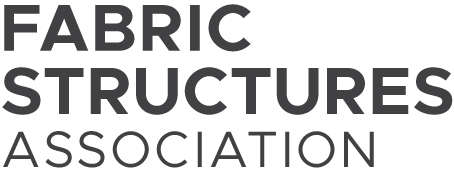Air-inflated structure

A structure that uses air-pressurized membrane beams, arches, or other elements to enclose space. Occupants of such a structure do not occupy the pressurized area used to support the structure.
Air-supported structure

A building wherein the shape of the structure is attained by air pressure and occupants of the structure are within the elevated pressure area.
Cable net structure

Single-layered anticlastic surface made of two sets of closely spaced cables that are orthogonal (or nearly so) to one another. The net usually supports a fabric or pliable material.
Frame-supported fabric structure

A structure that is comprised of a frame or frames that form a loadbearing structure without the aid of any fabric or pliable material. However, the membrane may contribute toward the stability of the structure.
Geodesic dome

Spherical, singe- or double-layered shells made up of hexagons and pentagons.
Grid shell structure

A curvilinear surface (synclastic or anticlastic) composed of linear elements configured to form squares, triangles, and/or parallelograms. They may be single or double-layered and sometimes employ in-plane cables for stability and shear resistance.
Tensegrity structures (cable and strut)

A planar or curvilinear structure composed of short discontinuous compression elements (struts) connected by tensile members (cables) to form a coherent configuration. Such structures are often referred to as “tensegrity” structures.
Tensile structure

A structure that is characterized by a tensioning of the fabric or pliable material system (typically with wire or cable) to provide the critical structural support to the structure.
 TEXTILES.ORG
TEXTILES.ORG 



